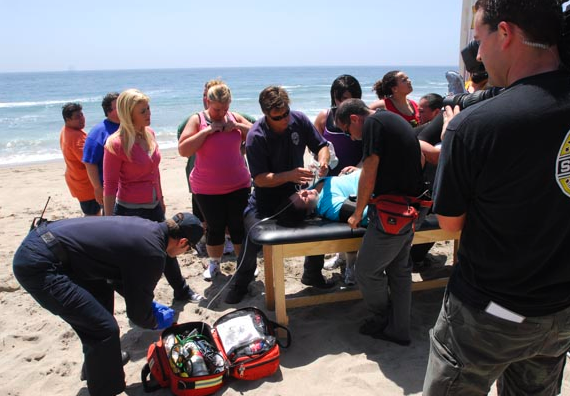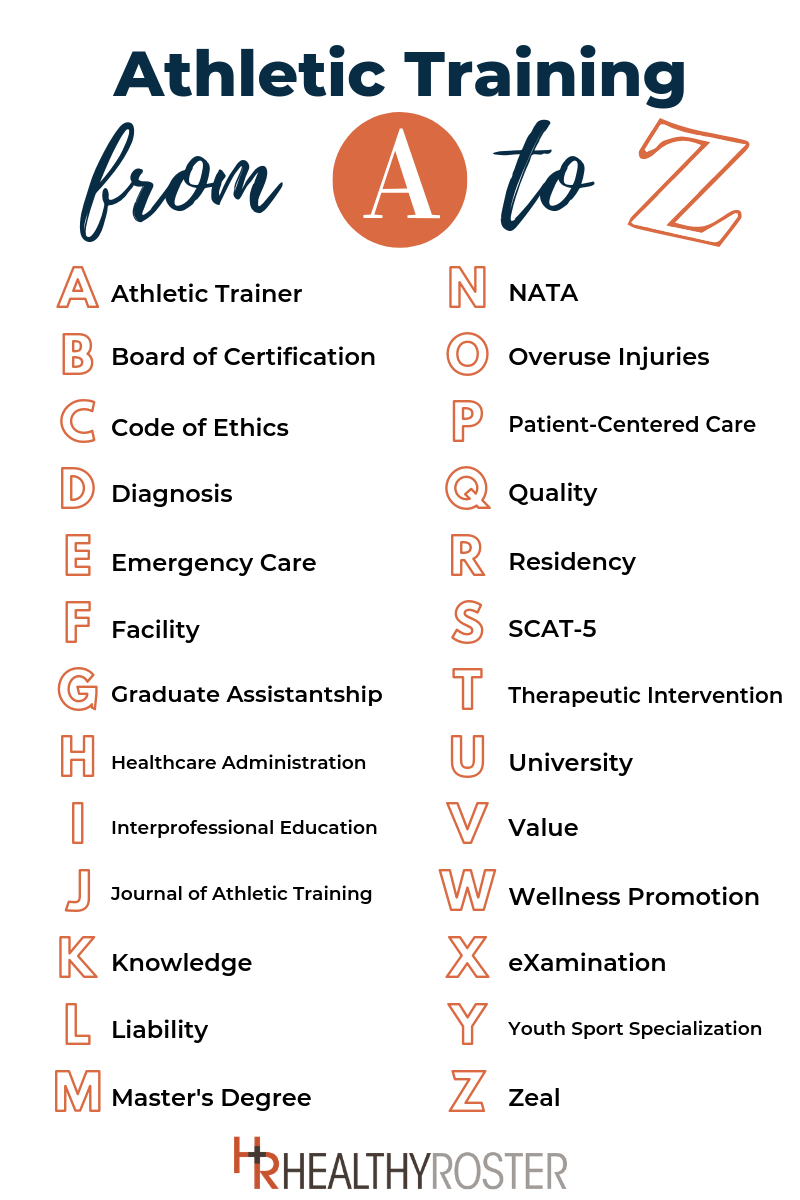Beyond the Sideline: Athletic Trainers in Unique Environments

Beyond the Sideline
Athletic Trainers in Unique Environments
When we think of athletic trainers, we tend to picture them standing on the sidelines at youth, college, or professional sporting events, ready to spring into action at the first sign of an injury. It’s right there in the name: athletic trainers support athletes. Right? Well, not entirely. In fact, ATs are healthcare professionals whose skills and expertise are being utilized across a variety of environments — not just in the world of sports. As March is National Athletic Trainer Month, we’re celebrating how and why ATs Are Healthcare, and to kick things off, we’ve decided to shine a light on some other settings where you will regularly find ATs employed.
From the workplace to the battlefield, here are just some of the industries being supported and improved by the hard work of certified athletic trainers.
Military
 Sports Medicine and Injury Prevention Athletic Trainers at Marine training
Sports Medicine and Injury Prevention Athletic Trainers at Marine training
In many ways, sports represent a simulated battle between two opposing sides. Therefore, it should come as no surprise that athletic trainers are essential to those preparing for actual battle as well. Whether they’re just starting out at boot camp or seeing regular combat, members of our armed forces are at risk for injuries such as sprains, strains, and concussions, and thus, it’s essential for ATs to be on-site to help evaluate and treat them, as well as provide screening and aid in injury prevention. Formed in 2001, the Armed Forces Athletic Trainers’ Society (AFATS) aims to “advance, encourage, supplement and improve the profession of athletic training by developing the common interests of its membership for the purpose of enhancing the quality of US Armed Forces Health Care.” Today, you can find ATs in a variety of military settings across the country, from Fort Benning to Officer Candidate School in Quantico. And in coming years, AT involvement in our armed forces will only be increasing. The Marine Corps is expected to invest up to $8.6 million annually on experienced athletic trainers over the next four years as they seek to expand and assign ATs to expeditionary forces.
NASA
 The ASCR keeps astronauts and pilots healthy and fit
The ASCR keeps astronauts and pilots healthy and fit
There’s a reason NASA doesn’t let just anyone explore the solar system. Given the millions of dollars and extensive brain power that go into planning and executing a successful space mission, it’s imperative that astronauts are in peak physical condition — any injury could be incredibly costly. Furthermore, because astronauts face zero gravity while rocketing through the cosmos, they’re placed at risk for muscle atrophy and a decrease in bone density. With all of this in mind, it’s no wonder that NASA keeps athletic trainers on staff to limit the risk of injury by helping astronauts get in shape for flights, stay in shape during a mission, and return to peak condition once they return to Earth. Known as the Astronaut Strength, Conditioning and Rehabilitation group (ASCR), this team of ATs and strength and conditioning specialists focus specifically on musculoskeletal injuries during all phases of spaceflight. And we mean all phases — you might be surprised to learn that a good chunk of astronaut injuries occur while getting into or taking off their cumbersome spacesuit! Whether or not that plays into your romantic ideal of a job at NASA, there’s no doubt that providing healthcare to the planet’s greatest explorers is a job that’s truly out of this world.
Workplace
Any fan of “The Office” probably remembers Toby’s not-so-exhilarating presentation on safety training day. And while we certainly hate to criticize such a classic show, it’s important to note that Michael’s description of these injury prevention practices as “lame” is misleading. In fact, more and more forward-thinking employers are beginning to see the physical and mental health benefits of implementing stretches, exercises, and lifestyle strategies into the workplace and are therefore electing to hire on-site athletic trainers. Workplace settings for ATs range from traditional offices — where they focus on musculoskeletal disorders (MSD) that can be caused by repetitive motions, confined spaces, static posture, improper tool use, and uncontrolled climates — to industrial environments. In the latter cases, industrial workers typically face the same physical demands as traditional athletes but lack the means to properly manage their body fitness. They often falsely believe that their work on the floor keeps them in shape, meaning they don’t need to devote extra time to their fitness. ATs can help them develop fitness strategies, identify risk factors, and promote healthier choices — and that is far from lame!
Performing Arts
Not every world-class athlete wears a uniform and plays on a field; many instead don costumes and take to the stage eight times a week. From actors to dancers to musicians to trapeze artists to… well… however you would describe the Blue Man Group, performing arts groups around the globe rely on athletic trainers. With their knowledge of musculoskeletal injuries and prevention strategies, ATs can analyze a performance area for potential hazards, educate performers on strategies for mitigating risk (a high percentage of performance arts injuries are overuse), and evaluate an injury quickly — as, after all, the show must go on. Any AT with an interest or a background in creative arts will find working within a performance setting incredibly rewarding, as they’ll have the opportunity to touch the lives of the performers and ultimately feel an integral part of the final performance.
Television
 Ever dream of making it in Hollywood? Well, good news: your career as an AT doesn’t preclude you from a job in Tinsel Town. Just look at Sandy Krum, an athletic trainer who, after years working for professional baseball teams, took a job as the Head Athletic Trainer for “The Biggest Loser.” He’d go on to work with contestants on the reality program for 11 years, while also overseeing other shows such as “American Gladiator” and “Losing It with Jillian Michaels.” Sandy is just one example of the countless dedicated athletic trainers working within the entertainment industry, where they report to studios and location shoots to provide healthcare and preventative education to contestants, stuntmen, and myriad other on-set workers. Even World Wrestling Entertainment hires ATs to work with their wrestlers — and, given the intense nature of the WWE, we’re glad to hear it!
Ever dream of making it in Hollywood? Well, good news: your career as an AT doesn’t preclude you from a job in Tinsel Town. Just look at Sandy Krum, an athletic trainer who, after years working for professional baseball teams, took a job as the Head Athletic Trainer for “The Biggest Loser.” He’d go on to work with contestants on the reality program for 11 years, while also overseeing other shows such as “American Gladiator” and “Losing It with Jillian Michaels.” Sandy is just one example of the countless dedicated athletic trainers working within the entertainment industry, where they report to studios and location shoots to provide healthcare and preventative education to contestants, stuntmen, and myriad other on-set workers. Even World Wrestling Entertainment hires ATs to work with their wrestlers — and, given the intense nature of the WWE, we’re glad to hear it!

